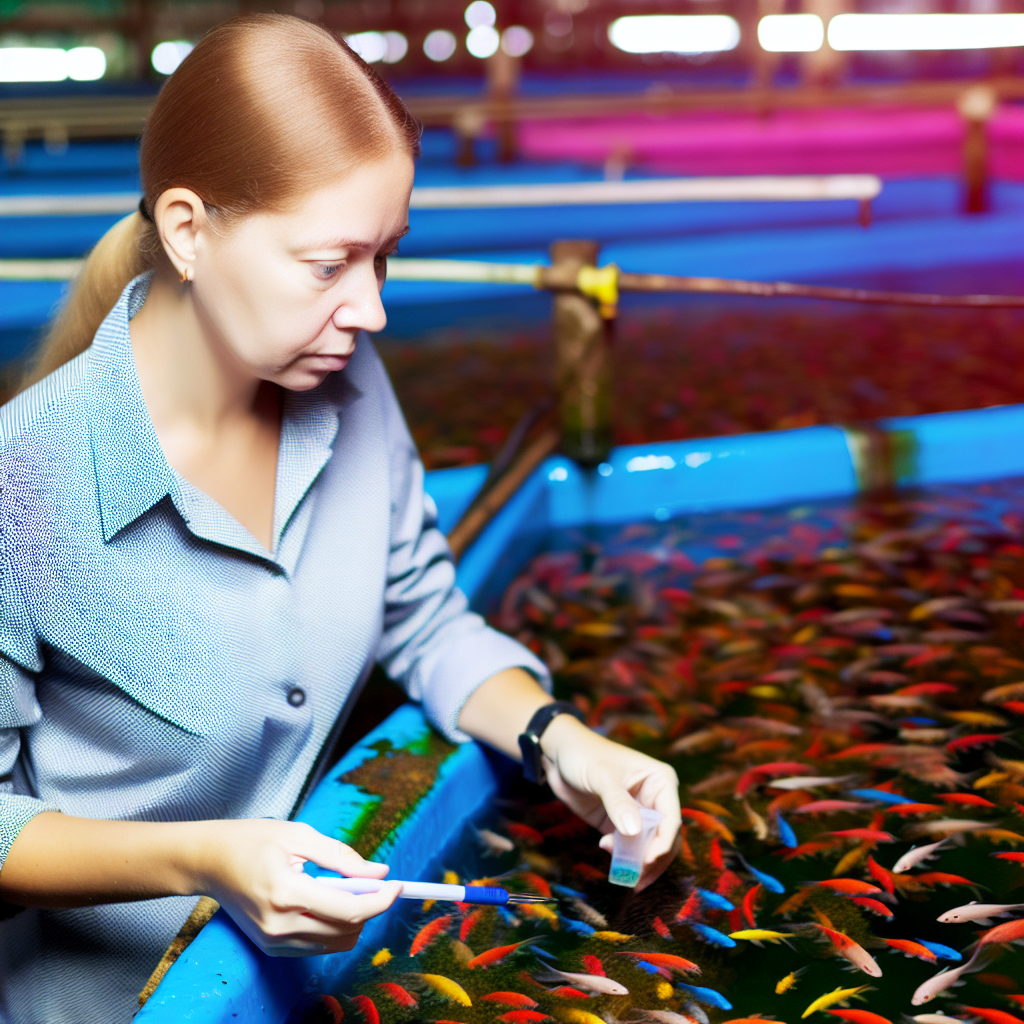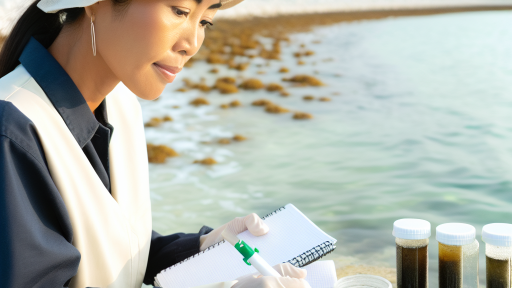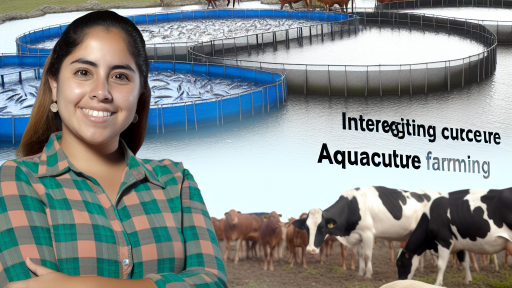Introduction to Fish Diseases
Types of Fish Diseases
Fish diseases can be classified into several categories.
Infectious diseases are caused by pathogens such as bacteria, viruses, and parasites.
Non-infectious diseases stem from environmental factors, including water quality and nutrition.
Another category includes stress-related illnesses caused by unsuitable farming conditions.
Examples of common infectious diseases include ichthyophthiriasis, commonly known as “ich.”
Other notable examples are columnaris and viral hemorrhagic septicemia.
Impacts on Aquaculture
Fish diseases significantly impact aquaculture productivity and profitability.
Infected fish may display reduced growth rates and increased mortality.
This, in turn, affects the sustainability of fish farming operations.
Economic losses can accumulate due to treatment costs and lower harvest yields.
Additionally, disease outbreaks can disrupt market supply, leading to price fluctuations.
Furthermore, high-density fish farming increases disease spread among populations.
Thus, effective disease management is crucial for successful aquaculture.
Farmers must invest in preventive measures to mitigate disease impacts.
Importance of Disease Prevention in Fish Farming
Protection of Fish Health
Preventing disease is crucial for maintaining fish health.
Transform Your Agribusiness
Unlock your farm's potential with expert advice tailored to your needs. Get actionable steps that drive real results.
Get StartedHealthy fish lead to better growth and productivity.
Furthermore, sick fish can negatively impact entire populations.
Economic Viability
Increased disease rates can lead to significant economic losses.
Preventative measures ensure better profit margins for farmers.
For example, investing in health management reduces treatment costs.
Maintaining Ecosystem Balance
Disease prevention helps maintain the ecological balance in aquatic environments.
Healthy fish populations support biodiversity in farms.
Additionally, diseases can spread to wild fish populations.
Consumer Confidence
Healthy fish foster a trusting relationship with consumers.
Consumers prefer products from farms that prioritize health management.
This trust directly impacts sales and market reach.
Regulatory Compliance
Fish farms face stringent regulations regarding health standards.
Compliance with these regulations is essential for operation.
Prevention strategies help ensure adherence to legal requirements.
Health Management Strategies for Fish Farms
Regular Health Monitoring
Regular health monitoring is crucial in fish farms.
This strategy includes periodic health assessments of the fish population.
Farmers should utilize health check protocols to identify signs of disease.
Additionally, monitoring water quality helps ensure fish welfare.
Consistent reporting of health issues to staff fosters quick responses.
Biosecurity Measures
Implementing strong biosecurity measures protects fish from diseases.
These measures involve restricting access to the farm premises.
Moreover, staff should follow strict hygiene protocols.
Use of disinfectants ensures low pathogen levels in feeding equipment.
Regular equipment cleaning prevents disease transmission.
Showcase Your Farming Business
Publish your professional farming services profile on our blog for a one-time fee of $200 and reach a dedicated audience of farmers and agribusiness owners.
Publish Your ProfileNutritional Management
Nutritional management plays a vital role in fish health.
Providing a balanced diet strengthens the fish’s immune system.
Farmers should consult with nutritionists for optimal feed formulations.
Incorporating supplements can enhance fish health significantly.
Reducing feed waste also improves water quality.
Stress Reduction Techniques
Minimizing stress is essential for maintaining fish health.
Implementing stress reduction techniques promotes good welfare.
These techniques may include ensuring adequate space for fish.
Maintaining consistent water conditions alleviates stress responses.
Additionally, using appropriate handling methods during transfers is crucial.
Vaccination and Disease Prevention
Vaccinating fish can significantly reduce disease outbreaks.
Farmers should work with veterinarians for vaccination schedules.
Being proactive in vaccination increases fish survival rates.
Moreover, awareness of potential disease risks is essential for prevention.
Regular training for staff enhances their ability to manage health issues.
Find Out More: Top Fish Species for Successful Aquaculture Operations
Role of Water Quality in Fish Health and Disease Prevention
Importance of Clean Water
Clean water is crucial for maintaining fish health.
It directly affects the immune systems of fish.
Polluted water can lead to disease outbreaks.
Regular monitoring of water quality can prevent these issues.
Key Water Quality Parameters
Several parameters define water quality in fish farming.
- Temperature plays a critical role in fish metabolism.
- Dissolved oxygen is vital for fish respiration.
- pH levels influence fish health significantly.
- Ammonia and nitrite levels must be kept low to prevent toxicity.
Each of these parameters needs regular assessment.
Effects of Poor Water Quality
Poor water quality can stress fish, making them more susceptible to disease.
It often leads to decreased growth rates and higher mortality rates.
In addition, pathogens thrive in contaminated water conditions.
Consequently, disease management becomes more challenging.
Strategies for Maintaining Water Quality
Implementing effective strategies is essential for ensuring water quality.
- Install water filtration systems to reduce contaminants.
- Regularly check and adjust pH levels as needed.
- Perform partial water changes frequently.
- Monitor feeding practices to limit waste buildup.
Proper aeration can also enhance dissolved oxygen levels.
Monitoring and Management Techniques
Regular testing is vital for maintaining optimal water quality.
Automated monitoring systems can provide real-time updates.
Using quick-test kits allows for easy assessment by staff.
Farm managers should keep detailed records of water quality data.
This documentation helps identify trends and issues early.
You Might Also Like: Breeding Strategies for Sustainable Livestock Farming
Vaccination and its Effectiveness in Preventing Fish Diseases
Importance of Vaccination
Vaccination plays a crucial role in aquaculture health management.
It helps to prevent outbreaks of infectious diseases.
Fish vaccines improve stock survival rates significantly.
Moreover, vaccinations reduce the need for antibiotics.
This approach promotes healthier fish populations overall.
Types of Vaccines
Various types of fish vaccines are available today.
Showcase Your Farming Business
Publish your professional farming services profile on our blog for a one-time fee of $200 and reach a dedicated audience of farmers and agribusiness owners.
Publish Your ProfileThey include inactivated, attenuated, and DNA vaccines.
Inactivated vaccines use killed pathogens to stimulate immunity.
Attenuated vaccines use weakened forms of the pathogen.
DNA vaccines introduce genetic material to provoke an immune response.
Effectiveness of Vaccination
The effectiveness of fish vaccines depends on several factors.
These factors include the species of fish and disease type.
Clinical studies show significant protection rates in vaccinated fish.
For instance, vaccinated fish often have lower mortality rates.
Furthermore, vaccinated populations exhibit better growth performance.
Best Practices for Vaccination
Proper vaccination practices enhance overall effectiveness.
First, ensure that fish are healthy before vaccination.
Next, follow recommended vaccination schedules carefully.
Employ proper handling techniques during the vaccination process.
Finally, monitor fish health post-vaccination for any adverse effects.
Challenges and Considerations
Despite its benefits, vaccination presents some challenges.
Vaccine availability may vary between regions.
Additionally, some fish may not respond well to vaccines.
It’s essential to consider the specific needs of each species.
Furthermore, biosecurity measures must complement vaccination efforts.
Gain More Insights: Preventing Genetic Diseases in Livestock
Nutritional Management
Importance of Nutrition in Fish Health
Nutritional management plays a critical role in fish health.
A well-balanced diet strengthens fish immune systems.
Healthy fish are less susceptible to diseases.
Moreover, nutrition affects growth rates and overall health.
Key Nutrients for Fish Immunity
Proteins are vital for tissue repair and growth.
Vitamins enhance immunity and metabolic processes.
Minerals support structural functions and enzyme activities.
Fatty acids are essential for brain and heart health.
Diet Formulation Strategies
Formulating diets requires understanding species-specific needs.
Use high-quality ingredients to ensure optimal nutrient absorption.
Incorporate a variety of feed types to prevent deficiencies.
Regularly assess and adjust diets based on fish health observations.
Effects of Poor Nutrition
Poor nutrition leads to weakened immunity in fish.
Fish may experience stunted growth or deformities.
Inadequate diets increase susceptibility to infections.
Ultimately, this affects overall farm productivity and profitability.
Monitoring and Adjusting Diets
Continuous monitoring is essential for effective nutritional management.
Utilize health assessments to identify nutritional gaps.
Regularly test water quality and feed parameters.
Adjust diets based on environmental changes and fish growth stages.
Showcase Your Farming Business
Publish your professional farming services profile on our blog for a one-time fee of $200 and reach a dedicated audience of farmers and agribusiness owners.
Publish Your ProfileGain More Insights: Developing Genetic Improvement Plans for Livestock

Monitoring and Early Detection of Diseases in Fish Populations
Importance of Regular Monitoring
Regular monitoring helps identify health issues in fish populations.
It allows farm operators to take timely action against diseases.
Observing fish behavior can reveal potential health concerns.
Additionally, monitoring water quality is crucial for fish health.
Techniques for Early Disease Detection
Utilizing advanced diagnostic tools is vital for early detection.
Employing PCR tests can identify pathogens in fish quickly.
Routine health assessments help spot abnormal signs in fish.
Furthermore, visual inspections should be part of daily practices.
Behavioral Observations
Fish displaying erratic swimming patterns may be ill.
Isolation from the school can also indicate health issues.
Changes in feeding behavior signal potential disease outbreaks.
Physical Inspections
Daily inspections for lesions or ulcers on fish are essential.
Checking for fin rot or unusual coloration is beneficial.
Inspect gills for discoloration or excessive mucus production.
Data Collection and Record Keeping
Accurate data collection supports effective management decisions.
Maintaining records of health assessments allows for trend analysis.
Utilizing software for record-keeping simplifies data management.
Establishing Baselines
Establishing a baseline for fish health is crucial.
This baseline helps in spotting deviations over time.
Regularly comparing data supports proactive health management.
Using Technology for Monitoring
Implementing sensors can monitor environmental conditions continuously.
Automated systems can alert farmers to any anomalies.
Remote monitoring technologies facilitate timely health interventions.
Collaboration with Veterinary Experts
Partnering with aquaculture veterinarians enhances disease management.
These experts can provide guidance on disease prevention strategies.
Regular consultations ensure best practices are implemented.
Education and Training
Training staff on disease recognition promotes a proactive approach.
Workshops on best practices support continuous learning.
Additionally, sponsoring knowledge-sharing sessions cultivates expertise.
Best Practices for Biosecurity in Fish Farms
Understanding Biosecurity
Biosecurity is essential for the health of fish farms.
It prevents the introduction and spread of disease.
Effective biosecurity practices protect both fish and workers.
Establishing a Biosecurity Plan
A comprehensive biosecurity plan helps manage risks.
First, assess potential threats to fish health.
Next, implement measures to mitigate those risks.
Access Control Measures
Control access to fish farms to prevent disease transmission.
Limit entry to essential personnel only.
Install fences and signage to deter unauthorized visitors.
Hygiene Protocols for Workers
Ensure all workers follow strict hygiene protocols.
Showcase Your Farming Business
Publish your professional farming services profile on our blog for a one-time fee of $200 and reach a dedicated audience of farmers and agribusiness owners.
Publish Your ProfileProvide handwashing stations at key locations.
Require workers to wear clean clothing and footwear.
Equipment and Vehicle Sanitation
Regularly sanitize equipment and vehicles used in the farm.
Use disinfectants approved for aquaculture use.
Implement a routine cleaning schedule to maintain hygiene.
Monitoring and Surveillance
Regular monitoring of fish health is crucial.
Implement a health surveillance program for early detection.
Record all health data for future reference and analysis.
Vaccination and Treatment Protocols
Use vaccinations and treatments responsibly as part of your strategy.
Consult with veterinary experts to determine the best options.
Keep accurate records of vaccinations and treatments administered.
Waste Management Practices
Proper waste management prevents disease vectors from breeding.
Dispose of waste according to environmental regulations.
Regularly clean and maintain waste disposal areas.
Emergency Response Planning
Have an emergency response plan in place for outbreaks.
This plan should include steps to isolate infected fish.
Train staff on emergency response protocols regularly.
Continuous Education and Training
Regularly train staff on the latest biosecurity measures.
Offer workshops to improve knowledge on disease prevention.
Encourage staff to share insights and improvements.
Case Studies: Successful Implementation of Health Management Programs
Introduction to Case Studies
Health management is crucial for fish farms.
Case studies showcase effective strategies in fish health management.
They provide real-life examples of success.
Case Study: AquaTech Fisheries
AquaTech Fisheries implemented a comprehensive health management program.
First, they performed regular health assessments of their fish stocks.
Next, they developed tailored nutrition plans for different species.
This led to a noticeable decrease in disease outbreaks.
Moreover, AquaTech trained their staff in biosecurity practices.
As a result, fish survival rates improved significantly.
Case Study: Blue Ocean Farms
Blue Ocean Farms focused on water quality management.
They installed advanced water filtration systems to maintain optimal conditions.
This initiative reduced harmful toxins in the water.
Additionally, they monitored water parameters frequently.
Consequently, this proactive approach minimized stress on the fish.
Fish growth rates increased dramatically over the year.
Case Study: Green Valley Aquaculture
Green Valley Aquaculture tackled disease prevention through vaccination.
They introduced a vaccination program for common fish diseases.
Regular training sessions ensured staff understood vaccination protocols.
This effort led to lower mortality rates during outbreaks.
Furthermore, the farm saw increased consumer confidence in their products.
Showcase Your Farming Business
Publish your professional farming services profile on our blog for a one-time fee of $200 and reach a dedicated audience of farmers and agribusiness owners.
Publish Your ProfileKey Takeaways from the Case Studies
- Effective health management programs lead to healthier fish populations.
- Regular monitoring and staff training enhance biosecurity practices.
- Investing in water quality improves overall fish health.
- Vaccination programs can significantly reduce disease impact.
Each case study illustrates the importance of tailored health management strategies.
Implementing these practices can ensure long-term success in fish farming.




